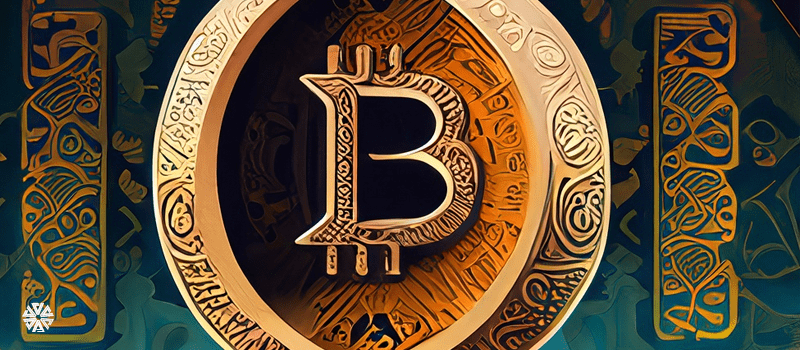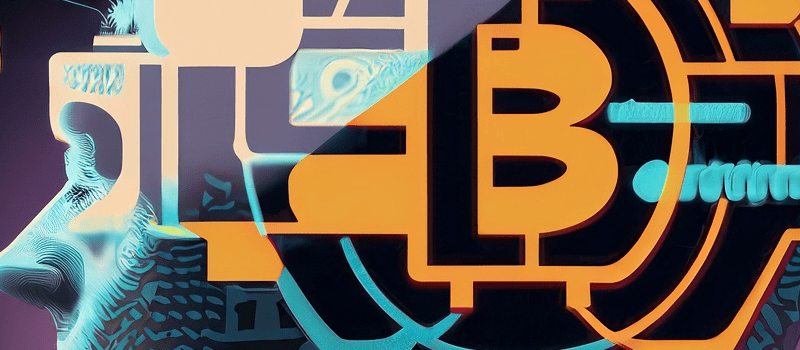Blockchain KSI: Ensuring Trust and Security in the Digital Age
As we navigate the ever-evolving digital landscape, trust and security have become paramount concerns. In this article, we will explore how the KSI Blockchain is revolutionizing the way we ensure trust and security in the digital age, offering a glimpse into the future of data integrity and authentication.
Introduction
Blockchain technology, with its inherent capabilities of transparent record-keeping and timestamping, has opened up new possibilities for securing sensitive data and records. One particular application of blockchains for data verification is the Keyless Signature Infrastructure (KSI) blockchain system.
KSI blockchain is a timestamping technique that allows you to prove the existence and integrity of your data without revealing its contents. It was originally developed by Guardtime, an Estonian cybersecurity company. Some key features of KSI blockchain include:
- Uses hash functions rather than digital signatures
- Aggregates document hashes into calendar hashes
- Provides integrity, scalability, and privacy
“KSI Blockchain technology has use cases across industries, applicable for purposes ranging from ensuring medical record integrity to device lifecycle management and financial trades.” – CertusDoc
Some applications and use cases of KSI blockchain:
| Sector | Use Cases |
|---|---|
| Government | Tax records, business registrations, health records |
| Supply Chain | Product provenance |
| Financial Services | Regulatory compliance, auditing |
| Healthcare | Medical record integrity |
In this article, we will explore the technical underpinnings of KSI blockchain, its applications across sectors, benefits and limitations, and the future outlook for this timestamping technology.
How KSI Blockchain Works
The Keyless Signature Infrastructure (KSI) blockchain is built on some unique technical principles that allow it to provide scalable data integrity with privacy. Some of its key technical features include:
-
Uses hash functions rather than digital signatures – KSI blockchain uses one-way cryptographic hash functions rather than digital signatures to secure data. This removes the need for public-private key pairs.
-
Aggregates hashes into calendar hashes – The hashes of documents are aggregated into larger calendar hashes that represent a certain period of time. This calendar backbone provides integrity across timescales.
“Guardtime’s Calendar technology links documents to the global calendar by aggregating document hashes into calendar hashes.” – Guardtime
-
Map-Reduce algorithm – To handle large datasets, KSI blockchain uses a map-reduce algorithm to distribute computations across nodes. This provides enhanced scalability.
-
No centralized blockchain – Unlike conventional blockchains, KSI does not have a single global ledger. The calendar backbone serves as a point of reference instead. This improves privacy.
-
Selective disclosure – Users can selectively reveal document hashes to third parties without compromising privacy. The verifier does not see the actual data.
To summarize, KSI blockchain relies on aggregation of hashes, distributed computation, and selective verification to provide a scalable, integrity-focused timestamping service while preserving privacy. The calendar backbone and hash functions allow timestamping without a centralized ledger.
Use Cases and Applications
The KSI blockchain has seen adoption in various sectors and industries that need to verify data integrity without compromising confidentiality. Some examples include:
Digital Government Infrastructure
Estonia has implemented nationwide digital governance infrastructure secured on the KSI blockchain. Some applications include:
- Over 1 million patient health records stored and verified using KSI blockchain.
“Today over 1 million patient health records are secured on the KSI Blockchain in Estonia.” – CertusDoc
-
Legal contracts ranging from property deals to employment terms store an immutable timestamped hash on KSI blockchain.
-
Business registrations and tax records use KSI blockchain for integrity and transparency.
Supply Chain Tracking
-
KSI blockchain enables product provenance tracking from manufacture to delivery by recording immutable timestamps at each stage.
-
Provides transparency for consumers while keeping supply chain data confidential.
Financial Services
-
KSI blockchain helps meet regulatory compliance requirements in financial services for timestamping transactions.
-
Enables auditing of historical financial records without accessing sensitive transaction data.
Other Sectors
- Healthcare: Medical record integrity
- IoT: Device lifecycle management
- Media: News verification, copyright protection
The KSI blockchain’s unique architecture makes it suitable for timestamping and verifying integrity in a privacy-preserving manner across industries.
Benefits and Advantages
The KSI blockchain provides some key benefits that make it well-suited for data integrity and timestamping applications:
-
Immutable proof of data integrity – The blockchain structure gives strong cryptographic guarantees that data has not been tampered with or altered.
-
Scales to handle high data volumes – The map-reduce architecture allows KSI to handle billions of transactions. It is currently scaling to petabytes of data.
-
Energy efficient – Unlike proof-of-work blockchains, KSI does not require computationally intensive consensus, allowing very high efficiency.
-
Retroactive tamper evidence – Any tampering would be evident when re-running old calendar hashes. Immutability is backdated.
-
Selective disclosure – Users can selectively reveal parts of the blockchain to verify integrity without compromising privacy.
“KSI Blockchain technology supports selective disclosure of confidential data and verification thereof by an external party without compromising data privacy.” – PwC
- Easy integration – KSI has REST APIs that allow easy integration with existing systems.
To summarize, KSI combines scalability, energy efficiency, tamper proofing, and privacy in a novel architecture that unlocks several use cases related to integrity, security, and trust.
Limitations and Challenges
While the KSI blockchain has several benefits, it also comes with some limitations and challenges:
-
Relies on honest backbone calendar – The security of KSI depends on the assumption that the calendar servers honestly publish hashes. Compromise would break trust.
-
Limited adoption outside Estonia – So far, KSI usage has been concentrated in Estonia’s digital governance infrastructure. Broader adoption faces barriers.
-
Integration with legacy systems – Integrating KSI APIs with old enterprise systems can involve software and architecture changes.
-
Skills gap – Understanding and implementing KSI requires specialized skills like cryptography and distributed systems.
-
Competing solutions – Other blockchain timestamping systems like Factom, Chainpoint and OriginStamp provide alternatives.
“One of the main challenges relates to the lack of technical skills and understanding of this technology at citizen, business and government levels.” – CEOS.org
- Visualization – The underlying technology can be difficult to explain or visualize simply to end users.
To realize the full potential of KSI blockchain, these limitations around trust assumptions, integration, skills, and competing solutions need to be addressed through collaborations and capacity building.
Future Outlook
Some potential areas of growth and development for KSI blockchain include:
-
Increased adoption in sectors like healthcare, legal services, and public administration to secure sensitive records and data.
-
Standards development to make KSI implementation and integration more standardized.
-
User-friendly interfaces to allow non-technical users to easily interact with KSI blockchains.
-
Growth of blockchain skills through education and training to increase understanding and adoption.
-
Convergence with other technologies like IoT, digital identity, and analytics to provide integrated solutions.
-
Competition with other blockchains as the timestamping ecosystem evolves. KSI will need to keep innovating.
“Looking ahead, KSI technology will continue to evolve – with improvements to core performance, greater utility across industries, and application in emerging tech arenas.” – Swisstruth
-
Hybrid models that bridge private centralized systems with public KSI chains for specific use cases.
-
Cost reductions to make KSI solutions more affordable, especially for smaller organizations.
KSI blockchain has shown promising capabilities for data integrity and security. As blockchain skills and infrastructure mature, KSI is poised for wider real-world adoption and impact across sectors. But it will need to keep innovating in this competitive landscape.
Conclusion
In summary, the Keyless Signature Infrastructure (KSI) blockchain provides a novel architecture for scalable timestamping and data integrity verification. Some of its key features include:
- Use of hash functions instead of digital signatures
- Aggregation into calendar hashes for versioning
- Map-reduce structure for distribution and scaling
- Selective disclosure for privacy
These technical foundations enable KSI blockchain to meet the challenge of immutable, auditable record-keeping with confidentiality for vast amounts of data.
While the technology is still maturing, KSI blockchain has already seen innovative real-world deployment in Estonia’s e-governance infrastructure. It secures legal records, health data, tax filings, and more.
Beyond government use cases, KSI blockchain shows promise for financial services, healthcare, supply chain security, and IoT. Its combination of integrity, privacy, and scalability opens up many applications.
However, wider adoption outside of Estonia will depend on advances in integration tools, standards, and blockchain literacy. KSI also faces competition from other blockchain timestamping tools.
Looking ahead, KSI could potentially evolve into a widespread trust infrastructure for verified data sharing across industries. But it will need to keep innovating on usability, interoperability, and real-world functionality.






Responses